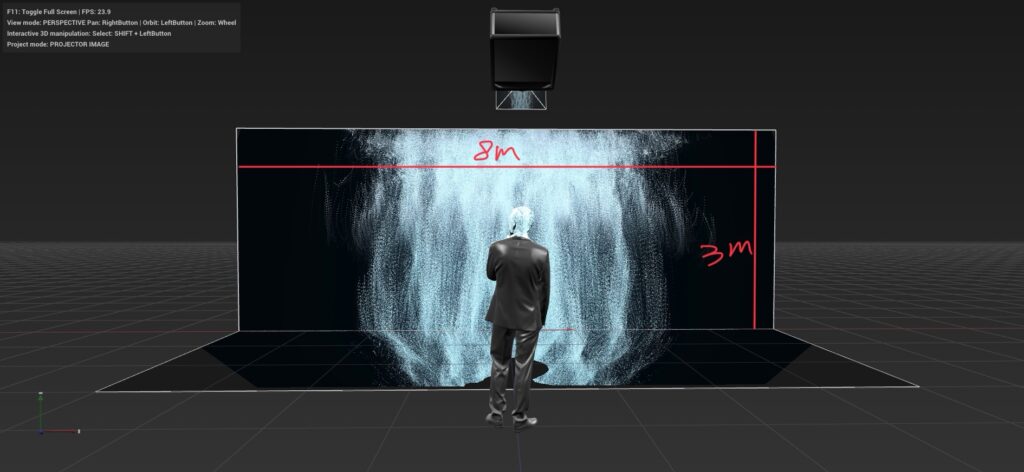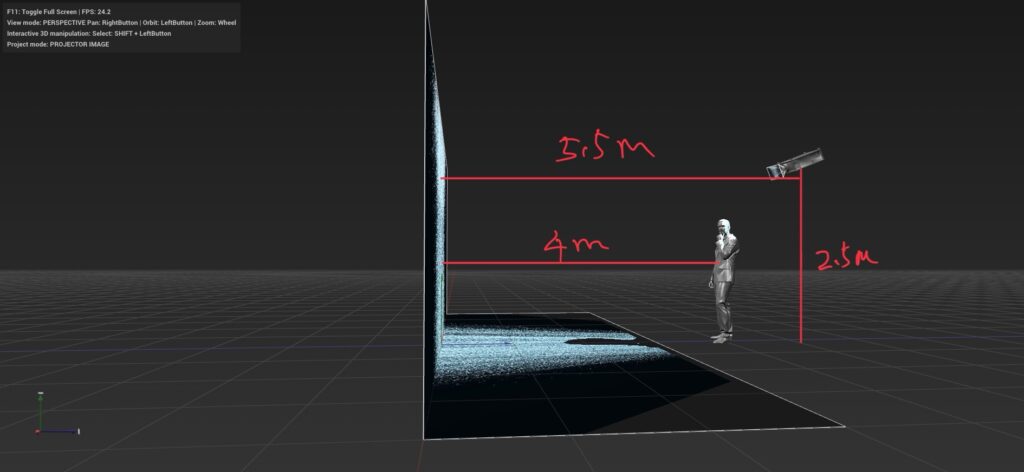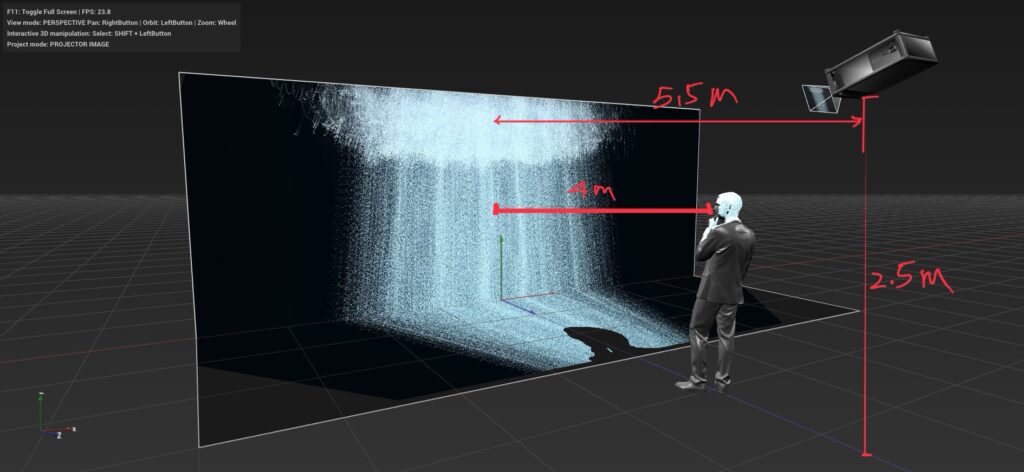Introduction to Projector Rental Services
In recent years, projector rental services have become increasingly vital for businesses, educational institutions, and individuals alike. These services offer a cost-effective solution for accessing high-quality projection technology without the need for large capital investments associated with purchasing equipment. Renting projectors allows users to utilize advanced technology tailored to specific events, presentations, or gatherings, making it an attractive option in a fast-evolving digital landscape.
Projector rental entails the temporary possession of high-performance projectors and related audio-visual equipment for a set period. Various types of projectors are available for rent, including LCD, DLP, and LED projectors, catering to different requirements such as clarity, brightness, and resolution. Additionally, rental services often provide complementary accessories, such as screens, speakers, and mounting equipment, ensuring a comprehensive package that meets the diverse needs of clients.
There are several scenarios in which individuals or companies might opt for projector rental instead of purchasing their own equipment. For instance, businesses hosting a one-time event or conference may find it financially impractical to invest in projectors that will only be used occasionally. Similarly, educational institutions holding special presentations or lectures may prefer rental services to avoid the maintenance and storage challenges associated with ownership. Moreover, renting allows clients to access the latest technologies and features without the obligation of long-term ownership.
This guide aims to underscore the relevance and necessity of projector rental services in today’s digital age. As technology continues to advance, renting projectors not only provides flexibility but also enables users to deliver impactful presentations and events with minimal effort. Exploring the world of projector rental services can ultimately lead to smarter, more efficient choices in leveraging projection technology for various purposes.

Types of Projectors Available for Rent
When considering projector rental services, it is crucial to understand the various types of projectors available and their unique features. The three primary types of projectors are DLP (Digital Light Processing), LCD (Liquid Crystal Display), and LED (Light Emitting Diode) projectors. Each type serves different needs and environments, making it important to select the appropriate technology for your specific application.
DLP projectors employ a digital micromirror device to reflect light, offering sharp images and vibrant colors. They are noted for their high contrast ratios and are often chosen for smaller venues as well as home theaters. DLP projectors are particularly effective in situations where image quality and detail are paramount, such as corporate presentations or film screenings.
LCD projectors, on the other hand, utilize liquid crystal panels to project images. This technology is advantageous for providing bright and accurate color reproduction, making LCD projectors ideal for environments with ambient light, such as classrooms and conference rooms. They generally have a wider viewing angle compared to DLP projectors, making them suitable for larger audiences.
LED projectors are gaining popularity due to their compact size and energy efficiency. They use LED lights for illumination, resulting in longer lifespan and lower power consumption. Although traditionally not as bright as their DLP and LCD counterparts, advancements in LED technology have improved their performance in various lighting conditions. These projectors are often used for portable solutions or small-scale events.
In addition to these primary types, specialized projectors such as short-throw and long-throw models cater to unique use cases. Short-throw projectors can produce large images from a short distance, which is perfect for small spaces like classrooms or home setups. Conversely, long-throw projectors are designed for larger venues, enabling projection over considerable distances, making them suitable for auditoriums or outdoor events. Understanding these different projector types ensures effective decision-making when selecting the most appropriate rental for your needs.

Projection Technology: An Overview
Projectors have become an integral part of various settings, from business presentations to home theaters. Understanding the technology behind projectors is essential for anyone considering renting this equipment. At their core, projectors work by taking an image or video content and projecting it onto a surface, usually a screen. The effectiveness of this projection is influenced by a variety of factors, including resolution, brightness, contrast ratio, and throw distance.
Resolution refers to the amount of detail that a projector can display. It is typically measured in pixels, with common formats being 720p, 1080p, and 4K. Higher resolution projectors can produce sharper, more detailed images, making them ideal for visually intensive presentations or movie watching. When assessing projector rental options, it is crucial to consider the resolution that will best meet your needs.
Brightness is another vital aspect of projector technology, usually measured in lumens. A projector’s brightness determines how well it can perform in different lighting conditions. For rooms with ambient light, a projector with higher lumens is essential to avoid washed-out images. Conversely, in darker rooms, a lower lumen projector can be adequate. Understanding the brightness required for your specific environment will lead to better outcomes in your audiovisual experience.
The contrast ratio, which measures the difference between the darkest and brightest parts of an image, significantly impacts the quality of the projected image. A higher contrast ratio allows for deeper blacks and more vibrant colors, enhancing the overall viewing experience. Additionally, throw distance refers to the distance between the projector and the screen, influencing the size of the projected image. Knowing the throw distance required for your setup will ensure that you achieve the desired screen size without compromising image quality.
In conclusion, comprehending these key aspects of projection technology—resolution, brightness, contrast ratio, and throw distance—will equip individuals with the necessary knowledge to make informed decisions for their projector rental needs.

Benefits of Renting a Projector
Renting a projector provides several notable advantages, making it an appealing option for various events and presentations. One of the primary benefits is cost-effectiveness. Purchasing high-quality projectors can be a significant financial investment, especially for organizations or individuals who may not require consistent use. Renting allows access to premium technology without the hefty price tag associated with outright ownership.
Access to the latest technology is another compelling reason to consider renting. The field of projection technology is constantly evolving, with new models and features emerging regularly. By opting for a rental service, clients can utilize the most advanced projectors available, ensuring superior output quality for their events. This is particularly beneficial for businesses and educators looking to impress audiences with high-definition visuals.
Flexibility is also a key factor when it comes to renting projectors. Events often vary in size, location, and requirements, and a rental arrangement allows clients to select the specific projector that best fits their needs without being tied down to a particular device. For instance, a company may need a powerful projector for a large conference and a compact one for smaller meeting spaces. Renting facilitates this adaptability.
Additionally, reduced maintenance responsibilities enhance the appeal of projector rentals. Owning a projector entails maintenance costs and responsibilities, such as regular servicing, bulb replacements, and technical support. With rental services, these responsibilities are typically managed by the rental company, freeing clients to focus on their events rather than the equipment.
Many clients have positively reported their experiences with renting projectors. For example, a small business utilized a rental service for a product launch and was able to secure the latest model, which featured stunning resolution and clarity. This decision not only elevated their presentation but also left a lasting impression on potential clients. Such testimonials highlight the myriad advantages that projector rentals can offer to organizations of all sizes.

Choosing the Right Projector for Your Event
When planning an event that incorporates visual displays, selecting the appropriate projector is crucial to ensure that your audience fully engages with the content. Prior to making a choice, several factors must be taken into consideration to match the projector’s specifications with the event’s unique requirements.
The first aspect to evaluate is the audience size. A small projector may suffice for intimate gatherings with a limited number of participants, while larger audiences will necessitate a more powerful projector with higher brightness levels. Brightness, measured in lumens, is essential, particularly in environments with high ambient light. Typically, a projector offering at least 3000 lumens is recommended for brightly-lit venues, while lower-lumen projectors could be effective in darker settings.
Next, the size and layout of the venue play significant roles. Consider the distance between the projector and the screen; if the venue is spacious, a long-throw projector may be required to fill the screen appropriately. Additionally, the projection surface should be assessed, as certain surfaces can enhance or diminish the clarity of the projected image. A smooth, white screen typically offers the best results.
Lighting conditions within the venue also affect projector selection. In rooms with substantial natural light, an ultra-bright projector could enhance visibility. On the contrary, a softer-lumen projector might work well in a controlled lighting environment. Furthermore, the type of presentation matters. For dynamic video displays, a projector with high contrast ratios and superior color accuracy will provide more engaging visuals. Conversely, a standard text or PowerPoint presentation may require less advanced technology.
To assist with the projector selection process, consider creating a checklist that includes the factors mentioned—audience size, venue dimensions, lighting conditions, and presentation type. By systematically addressing these elements, you can make an informed decision that suits the specific needs of your event.
Frequently Asked Questions about Projector Rental
Choosing to rent a projector can often come with a myriad of questions, especially for individuals or businesses unfamiliar with the process. One common inquiry pertains to pricing; the cost of renting a projector can vary significantly based on the model, duration of the rental, and additional services included, such as delivery or setup. Typically, prices may range from modest sums for basic models to more substantial amounts for high-end devices, thereby enabling users to select an option that fits their budget.
An essential aspect of projector rental is the setup process. Potential clients often wonder if assistance is available. Many rental companies offer setup services, ensuring that the equipment is configured correctly, allowing users to focus on their presentation or event without the stress of dealing with technical difficulties.
Technical support is another frequent concern. Customers frequently ask whether tech support is accessible during the rental period. Reputable projector rental services generally provide comprehensive support, with technicians available to troubleshoot any issues that may arise during usage. This feature can offer significant peace of mind, especially for important events or presentations.
Rental duration is equally important to clarify. Users often question how long they can rent a projector. Companies typically offer flexible rental periods, ranging from a few hours to several weeks, facilitating arrangements that suit the particular requirements of an event. Additionally, clients may need to understand terms regarding early returns or extensions if necessary.
Lastly, many potential renters inquire about insurance for the equipment. Some rental agreements may include insurance to cover potential damages or theft, while others may require the customer to purchase insurance separately. Understanding the insurance options available is crucial for safeguarding against unforeseen incidents while utilizing rented projection equipment.
Setting Up Your Projector: Tips and Best Practices
To ensure a successful presentation, it is essential to set up your rented projector correctly. The initial step is determining the optimal placement of the projector. Ideally, the projector should be positioned at a distance that matches the specifications of the model you have chosen, which typically accounts for the throw ratio. This ratio will help you achieve the best image quality without distortion or loss of clarity.
Choosing the right screen is equally important. If your projector supports HD resolutions, opt for a high-quality projection screen that can enhance the visual experience. Each screen type, whether it be solid or retractable, offers unique benefits, so select one that meets your specific needs and space restrictions. If a screen isn’t available, a plain white wall could suffice, although the outcome may not be as ideal.
Once the projector is properly placed and the screen is selected, the next step is connecting your devices. Most projectors come equipped with various input options, including HDMI, VGA, and USB. Ensure you have the necessary cables and adapters to connect laptops, tablets, or any other peripherals you plan to use during your presentation. Take a moment to verify that your device recognizes the projector as an output source, which is usually found in the display settings.
Before your presentation begins, it is wise to troubleshoot common issues that could arise. Check the projector’s lens for dust or smudges, as any obstruction can impact the image quality. Additionally, adjust the focus and brightness settings to achieve a clear projection suitable for your audience. Conduct a test run to identify potential problems, allowing you to address them promptly before the actual event. Familiarizing yourself with the projector’s features will enhance your presentation effectiveness.
Maintenance and Care of Rented Equipment
When renting a projector, it is imperative to handle the equipment with care to ensure its longevity and optimal performance. Treating rented equipment as if it were your own minimizes the risk of damage, which can lead to additional charges. Before beginning your presentation, inspect the projector for any existing issues, and report them to the rental service provider to avoid being held responsible later.
One of the most critical aspects of projector maintenance is keeping the lenses clean. Dust and fingerprints can significantly affect image quality, reducing visibility and clarity during a presentation. Use a microfiber cloth to gently wipe the lens; avoid harsh materials that might scratch the surface. Additionally, keeping the projector in a dust-free environment when not in use can prevent particles from accumulating on sensitive components.
Proper placement and positioning of the projector are essential to its functionality as well. Ensure that it is securely mounted or placed on a stable surface where it won’t be accidentally knocked over. If using a ceiling mount, double-check the attachments to avoid any mishaps. It is also wise to ensure that all cables are properly secured and organized, preventing any tripping hazards or accidental disconnections that could interrupt your presentation.
Lastly, make certain to follow any specific operational guidelines provided by the rental company. This includes adhering to power requirements, as improper voltage can damage equipment. Regularly check the status of the projector during use to ensure it is functioning correctly, and if any issues arise, address them immediately to avoid further complications.
By following these maintenance practices, clients can help ensure that their rented projector remains in good working condition throughout the rental period. Adopting a proactive approach will ultimately lead to a smoother and more successful presentation experience.
Conclusion
Projector rental services offer a versatile and efficient solution for enhancing presentations and events. As outlined throughout this guide, the benefits of utilizing these services extend beyond mere convenience. The advancements in projection technology enable a range of applications, from corporate meetings to educational settings, enriching the overall viewing experience. By opting for projector rentals, individuals and organizations can access cutting-edge equipment without the burden of upfront costs associated with purchasing the technology outright.
Flexibility remains a significant advantage of projector rental services. Whether planning a small gathering or a large conference, the ability to choose equipment that aligns with specific needs is invaluable. With various options available, including different resolutions, sizes, and additional accessories, clients can ensure that their presentations deliver the intended impact. This adaptability not only enhances the quality of displays but also accommodates the diverse demands of various events.
Furthermore, the focus on professional service providers ensures that clients receive expert advice tailored to their unique requirements. Many rental companies offer support such as delivery, setup, and on-site assistance, allowing users to concentrate on the content of their presentations rather than technical challenges. Such services contribute to a seamless event experience, reinforcing the decision to engage projector rental services.
In essence, the integration of projector rentals into event planning can significantly elevate the quality and effectiveness of presentations. By embracing these services, users position themselves to leverage the innovative capabilities of modern projection technology. Therefore, individuals and organizations looking to enhance their events should seriously consider the advantages provided by projector rental offerings, making their gatherings more memorable and impactful.

